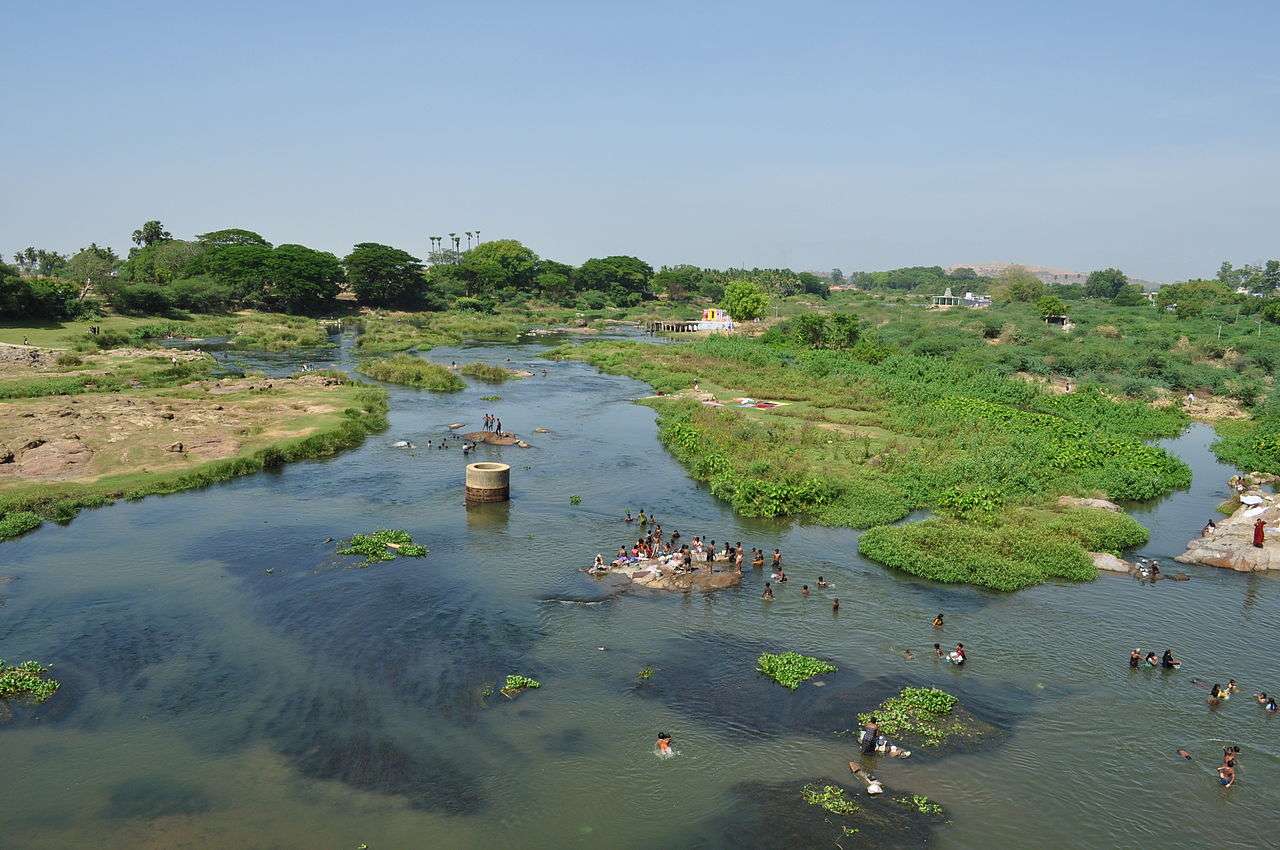River length: 130 km
Basin area: 130 km
Population in basin: –
States in basin: Tamil Nadu

Major cities using water
Tirunelveli (pop: 474,000)
River Depletion
- Dry season drought risk: Low
- Monsoon flood risk: High
- Seasonal variability of water levels: High
Economic & Environmental Significance
- The Papanasam dam located 49 km from Tirunelveli irrigates 85,000 acres of paddy fields in Tirunelveli and Tuticorin districts. There are several other anicuts and channels on the river and its tributaries. The Papanasam Hydroelectric Power Plant has a design capacity of 28 MW. The first unit was commissioned in 1944.
- The Central Government has also proposed to make a 9 km stretch of the river near its mouth navigable. It will be linked to the Tuticorin port, 15 km away.
- The Agastya Malai, also called the Podhigai Hills, where the river is born, are a rich source of medicinal plants, celebrated in Siddha literature. This region is also part of the Western Ghats, one of the biodiversity hotspots in the world. The river is home to many rare and endemic fish species. The wetlands around the river are home to over 90 species of birds.
Recent Disasters
This year in June, the perennial Thamirabarani had almost dried up and the Papanasam dam across it was shut. Water uptake by major industries at Srivaikuntam was stopped and the Thoothukudi power plant shut down. Even in the severe drought of the mid-1970s, one crop could be irrigated by the river. But this year, there was none. Water depletion has led to saline water ingress near Punnakayal, where the river meets the sea.
Apart from water depletion, mixing of sewage, industrial pollution and dumping plastics are major issues faced by the river. Illegal sand mining is also affecting the river’s life, its natural purification capabilities and groundwater recharge.
Spiritual & Cultural Significance
The story of the river’s origin is connected to Agastyamuni. According to the Thamirabarani Mahatmyam, an ancient account of the river, a string of red lotus flowers from Agastya at Pothigai hills transformed itself into a damsel at the sight of Lord Shiva, forming the river and giving it its divine name.
Other legends also link to river to Agastya. Agastya is said to have placed nine flowers into the river and asked one of his disciples to install a Shiva linga wherever the flowers reached the banks. These nine abodes are called Nava Kailasam. They are linked to the navagrahas. The disciple was also told to take a dip in the river where it meets the sea. The disciple was thus liberated.
The Podhigai Hills are also said to be the place where Agastya gave the first grammar for Tamil. The river is referred in the ancient Tamil and Sangam texts.
The Thamirabarani River was also called Podhigai and Tambaraparani. The river is said to contain traces of copper. The word Thamiram means copper in Tamil. The copper content gives it a distinct reddish shade. The river then flows through the Tirunelveli and Tuticorin districts and then eastwards into the Gulf of Mannar.
References
- http://www.indianetzone.com/14/thamirabarani_river.htm
- http://brandequity.economictimes.indiatimes.com/news/business-of-brands/pepsi-coca-cola-permitted-to-draw-water-from-thamirabarani-river/57442282
- http://www.tangedco.gov.in/hydrokoday.html
- http://timesofindia.indiatimes.com/city/chennai/Tamirabarani-States-only-perennial-river-will-also-be-its-1st-navigable-one/articleshow/55717313.cms
- http://www.thehindu.com/society/the-river-that-tamil-nadu-often-forgets/article18919699.ece
- http://palaeontologicalsociety.in/vol35/v6.pdf
- http://www.fisheriesjournal.com/vol2issue5/Pdf/2-5-70.1.pdf
- http://www.saconenvis.nic.in/e_bulletin_jan_2015_files/Thamirabarani.htm
- Photo Credit: https://commons.wikimedia.org/wiki/File:Thamirabarani_River_தாமிரபரணி_பொருணை_ஆறு.jpg